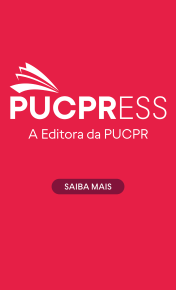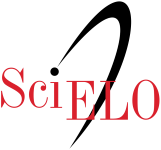Emotion and the predictive mind: Emotions as (almost) drives
DOI:
https://doi.org/10.7213/1980-5934.31.054.DS13Keywords:
emotion, interoception, interoceptive inference, perceptual theory of emotion, motivational theory of emotion.Abstract
Given its simplicity and enormous unifying and explanatory power, the predictive mind approach to mental architecture (predictive processing) is becoming an increasingly attractive way of carrying out theoretical and experimental research in cognitive science. According to this view, the mind is constantly attempting to minimize the discrepancy between its expectations (or sensory predictions) and its actual incoming sensory signals. In the interoceptive inference view of emotion (IIE), the principles of the predictive mind have been extended to account for emotion. IIE holds that, in direct analogy to visual perception, emotions arise from interoceptive predictions of the causes of current interoceptive afferents. In this paper, I argue that this view is problematic, as there are arguably no regularities pertaining to emotion in the physiological inner milieu, from which the relevant interoceptive expectations could be learned. Therefore, it is unlikely that our expectations relative to emotion involve interoceptive expectations in the way required by IIE. The latter view should then be amended. In this respect, I suggest that emotions might arise via external interoceptive active inference: by sampling and modifying the external environment in order to change a valenced feeling. Thus, if the predictive mind approach is on track, emotions are not to be understood in direct analogy to perception (e.g., vision). Rather, I suggest that the view of emotion that emerges from the predictive mind is in line with motivational approaches to emotion. In the suggested view, (almost) just as drives (or ‘homeostatic motivations’), emotions are suited for the active regulation of the inner milieu by sampling the environment in order to finesse our emotion expectations. In this view, emotions are individuated, and differ from drives, in virtue of the distinctive sampling policies (‘actions’) characteristic of the high levels of the predictive hierarchy.
Downloads
References
Barrett, L. 2006. Are emotions natural kinds? Perspectives in Psychological Science, 1, 28– 58.
Cabanac, M. 1971. Physiological role of pleasure. Science, 173(2), 1103–1107.
Cabanac, M. 1979. Sensory Pleasure. The Quarterly Review of Biology, 54 (1), 1-29.
Carruthers, P. 2011. The Opacity of Mind: An Integrative Theory of Self-Knowledge. Oxford: Oxford University Press.
Clark, A. 2013. Whatever next? Predictive brains, situated agents, and the future of cognitive science. Behavioral and Brain Sciences, 36(3), 181– 204.
Clark, A. 2016. Surfing Uncertainty. Oxford: Oxford University Press.
Colombetti, G. 2014. The Feeling Body: Affective Science Meets the Enactive Mind. Cambridge, MA: MIT Press.
Craig, A.D. 2015. How do you feel? an interoceptive moment with your neurobiological self. Princeton University Press.
Devinsky, O., Morrell, M.J., and Vogt, B.A. 1995. Contributions of anterior cingulate cortex to behaviour. Brain, 118(1), 279-306.
Frijda, N. H. 1986. The Emotions. Cambridge: Cambridge University Press.
Frijda, N. H. 2010. Impulsive action and motivation. Biological Psychology, 84, 570–9.
Friston, K. 2005. A theory of cortical responses. Philosophical Transactions of the Royal Society of London. Series B: Biological Sciences, 360, 815– 36.
Hohwy, J. 2013. The predictive mind. Oxford: Oxford University Press.
James, W. 1884. What is an emotion? Mind, 9, 188-205.
Joffily, M., and Coricelli, G. 2013. Emotional valence and the free-energy principle. PLoS Computational Biology, 9(6), e1003094.
Prinz, J. 2004. Gut Reactions: A perceptual theory of emotion. Oxford: Oxford University Press.
Prinz, J. 2010. For valence. Emotion Review, 2, 5–13.
Quigley, K. S., and Barrett, L. F. 2014. Is there consistency and specificity of autonomic changes during emotional episodes? Guidance from the Conceptual Act Theory and psychophysiology. Biological Psychology, 98, 82-94.
Ritchie, J.B., and Carruthers, P. 2015. The bodily senses. In M. Matthen (ed.), The Oxford Handbook of the Philosophy of Perception (pp. 353-371). Oxford University Press.
Scarantino, A. 2009. Core affect and natural affective kinds. Philosophy of Science, 76, 940–957.
Scarantino, A. 2014. The motivational theory of emotions. In D. Jacobson and J. D'Arms (eds.), Moral Psychology and Human Agency (pp. 156–185). Oxford: Oxford University Press.
Seth, A. 2013. Interoceptive inference, emotion, and the embodied self. Trends in Cognitive Science, 17(11), 565-573.
Seth, A. 2015. The cybernetic Bayesian brain: from interoceptive inference to sensorimotor contingencies. In T. Metzinger and J. Windt (eds.), Open MIND (pp. 9–24). Frankfurt, Germany: MIND group.
Seth, A. and Critchley, H. 2013. Extending predictive processing to the body: Emotion as interoceptive inference. Behavioral and Brain Sciences, 36, 227–228.
Seth, A., Suzuki, K., and Critchley, H. 2012. An interoceptive predictive coding model of conscious presence. Frontiers in Psychology, 2, 395.
Seth, A. and Friston, K. 2016. Active interoceptive inference and the emotional brain.
Philosophical Transactions of the Royal Society B: Biological Sciences, 371 (1708), 1–10.
Van de Cruys, S. 2017. Affective Value in the Predictive Mind. MIND Group; Frankfurt am Main. Retrieved from https://lirias.kuleuven.be/retrieve/443336
Downloads
Published
How to Cite
Issue
Section
License
O autor transfere, por meio de cessão, à EDITORA UNIVERSITÁRIA CHAMPAGNAT, pessoa jurídica de direito privado, inscrita no CNPJ/MF sob o n.º 76.659.820/0009-09, estabelecida na Rua Imaculada Conceição, n.º 1155, Prado Velho, CEP 80.215-901, na cidade de Curitiba/PR, os direitos abaixo especificados e se compromete a cumprir o que segue:
- Os autores afirmam que a obra/material é de sua autoria e assumem integral responsabilidade diante de terceiros, quer de natureza moral ou patrimonial, em razão de seu conteúdo, declarando, desde já, que a obra/material a ser entregue é original e não infringe quaisquer direitos de propriedade intelectual de terceiros.
- Os autores concordam em ceder de forma plena, total e definitiva os direitos patrimoniais da obra/material à EDITORA UNIVERSITÁRIA CHAMPAGNAT, a título gratuito e em caráter de exclusividade.
- A CESSIONÁRIA empregará a obra/material da forma como melhor lhe convier, de forma impressa e/ou on line, inclusive no site do periódico da EDITORA UNIVERSITÁRIA CHAMPAGNAT, podendo utilizar, fruir e dispor do mesmo, no todo ou em parte, para:
- Autorizar sua utilização por terceiros, como parte integrante de outras obras.
- Editar, gravar e imprimir, quantas vezes forem necessárias.
- Reproduzir em quantidades que julgar necessária, de forma tangível e intangível.
- Adaptar, modificar, condensar, resumir, reduzir, compilar, ampliar, alterar, mixar com outros conteúdos, incluir imagens, gráficos, objetos digitais, infográficos e hyperlinks, ilustrar, diagramar, fracionar, atualizar e realizar quaisquer outras transformações, sendo necessária a participação ou autorização expressa dos autores.
- Traduzir para qualquer idioma.
- Incluir em fonograma ou produção audiovisual.
- Distribuir.
- Distribuir mediante cabo, fibra ótica, satélite, ondas ou qualquer outro sistema que permite ao usuário realizar a seleção da obra ou produção para recebê-la em tempo e lugar previamente determinados por quem formula a demanda e nos casos em que o acesso às obras ou produções se faça por qualquer sistema que importe em pagamento pelo usuário.
- Incluir e armazenar em banco de dados, físico, digital ou virtual, inclusive nuvem.
- Comunicar direta e/ou indiretamente ao público.
- Incluir em base de dados, arquivar em formato impresso, armazenar em computador, inclusive em sistema de nuvem, microfilmar e as demais formas de arquivamento do gênero;
- Comercializar, divulgar, veicular, publicar etc.
- Quaisquer outras modalidades de utilização existentes ou que venham a ser inventadas.
- Os autores concordam em conceder a cessão dos direitos da primeira publicação (ineditismo) à revista, licenciada sob a CREATIVE COMMONS ATTRIBUTION LICENSE, que permite o compartilhamento do trabalho com reconhecimento da autoria.
- Os autores autorizam a reprodução e a citação de seu trabalho em repositórios institucionais, página pessoal, trabalhos científicos, dentre outros, desde que a fonte seja citada.
- A presente cessão é válida para todo o território nacional e para o exterior.
- Este termo entra em vigor na data de sua assinatura e é firmado pelas partes em caráter irrevogável e irretratável, obrigando definitivamente as partes e seus sucessores a qualquer título.
- O não aceite do artigo, pela EDITORA UNIVERSITÁRIA CHAMPAGNAT, tornará automaticamente sem efeito a presente declaração.













